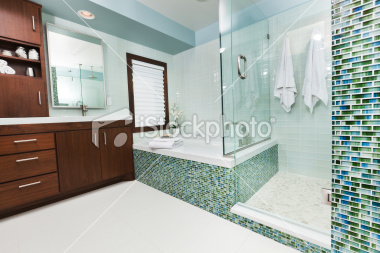Just Add Water: Damp Basements Dust Mites And Mold
Protecting Your Family
For example, since air flows upward into the upper levels of your home from the basement, it brings humidity fromthe basement with it. The potential effects include the #1 and #2 indoor allergens.
 Dust Mites — The #1 indoor allergens are dust mites. Dust mites are parasites that live in your carpeting, bedding and furniture. They are so tiny—you can’t see them. Their droppings are even smaller and float in the air. These droppings are the number one thing people with asthma and allergies react to indoors. Dust mites don’t drink water, but absorb it from the air. The good news is that if you keep relative humidity below 50%, they dry up and die (however they leave larvae behind to hatch when it gets damp again). Of course, when they die they stop producing waste. The best way to combat dust mites is to dry up your basement and then keep the relative humidity below 50%.
Dust Mites — The #1 indoor allergens are dust mites. Dust mites are parasites that live in your carpeting, bedding and furniture. They are so tiny—you can’t see them. Their droppings are even smaller and float in the air. These droppings are the number one thing people with asthma and allergies react to indoors. Dust mites don’t drink water, but absorb it from the air. The good news is that if you keep relative humidity below 50%, they dry up and die (however they leave larvae behind to hatch when it gets damp again). Of course, when they die they stop producing waste. The best way to combat dust mites is to dry up your basement and then keep the relative humidity below 50%.

Mold — It’s the #2 allergen in homes. Molds require high relative humidity, (70% or more) and an organic-based material on which to feed. Because mold spores are literally everywhere, if you have dampness, you can have mold anywhere in your home. Cooler surfaces create a perfect breeding area for mold because the relative humidity at their surface will be near 100%. The surface may even be wet with condensation. Dehumidifiers can help, but if your basement is allowing dampness / wetness to enter your home, the problem will continue and most likely worsen.
Protecting Your Home
Symptoms of a “wet or damp” home include the following:
?Sticking (swollen) doors and windows
?Smelly damp carpets
?Buckling hardwood floors
?Condensation, rotting / mold in your attic (as humid air escapes into your attic it can condense against a cold ceiling or roof)
?Frost or condensation and mold on the inside of windows in cool weather
?Aggravated asthma and allergies in general
Protecting Your Bank Account
Increased humidity in your home can cause the following:
?Increased cooling bills (damp air takes more energy to cool— 30% of an air conditioner’s load is to remove humidity. By starting with dry air, you will save on air conditioning costs)
?Increased heating bills (damp air takes more energy to heat)
?Decreased life of roof sheathing and shingles
?Decreased life of the paint on the outside of your house

Be Aware
When dealing with water, the damage in the basement itself is obvious. However, if what you have is not a catastrophic event, but a more subtle water and dampness problem, the list to the left represents many of the effects which may be connected with damp or wet basements. If any or all of these symptoms begin to occur, it is important to have your basement checked and create a plan to dry out your home. Your family and your home will thank you. Let’s face it, everyone wants their family to be healthy and free from things that can cause discomfort, or even illness. Keeping your basement dry is a huge first step to doing just that.
"Spring is always wet. And basements, if not prepared properly, are always at risk. The higher the humidity in in your home, the more problems present themselves for both your family and your home. Unfortunately the problems are interrelated. Once your home begins to show signs of high humidity or dampness, it means your family has already been exposed to unhealthy conditions for a period of time." Jim Hedrick, Owner Badger Basement Systems.






